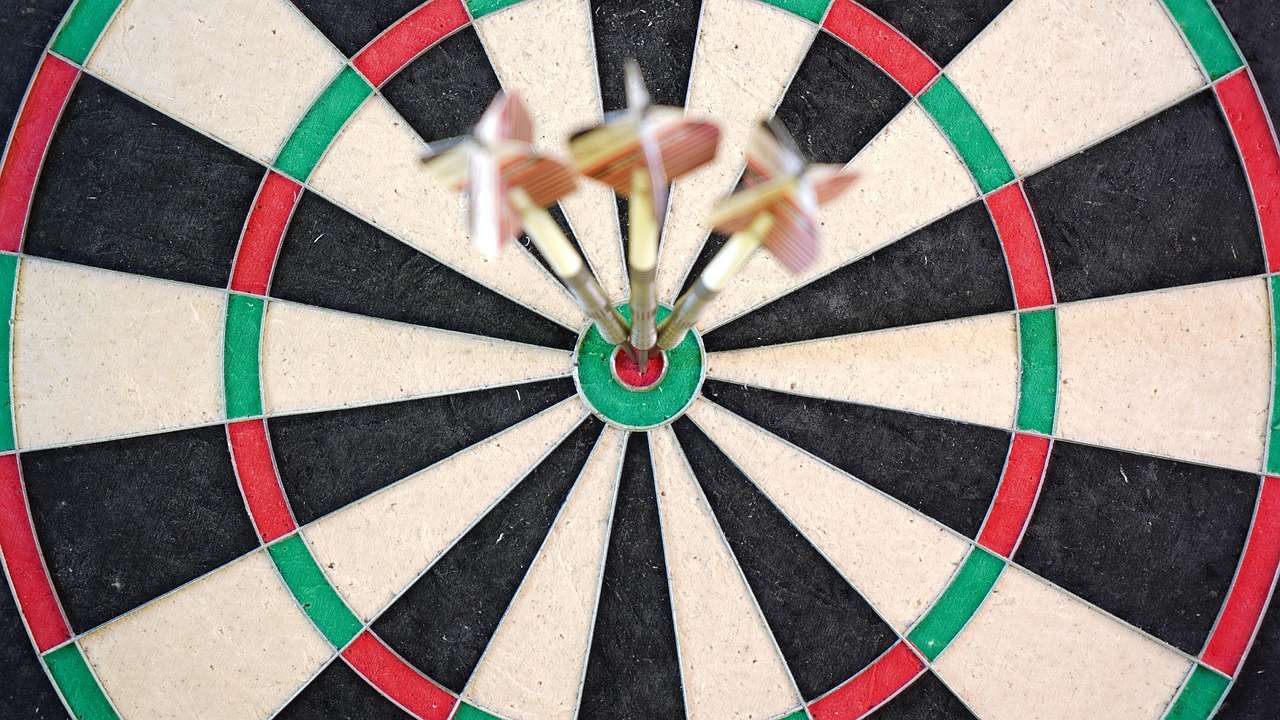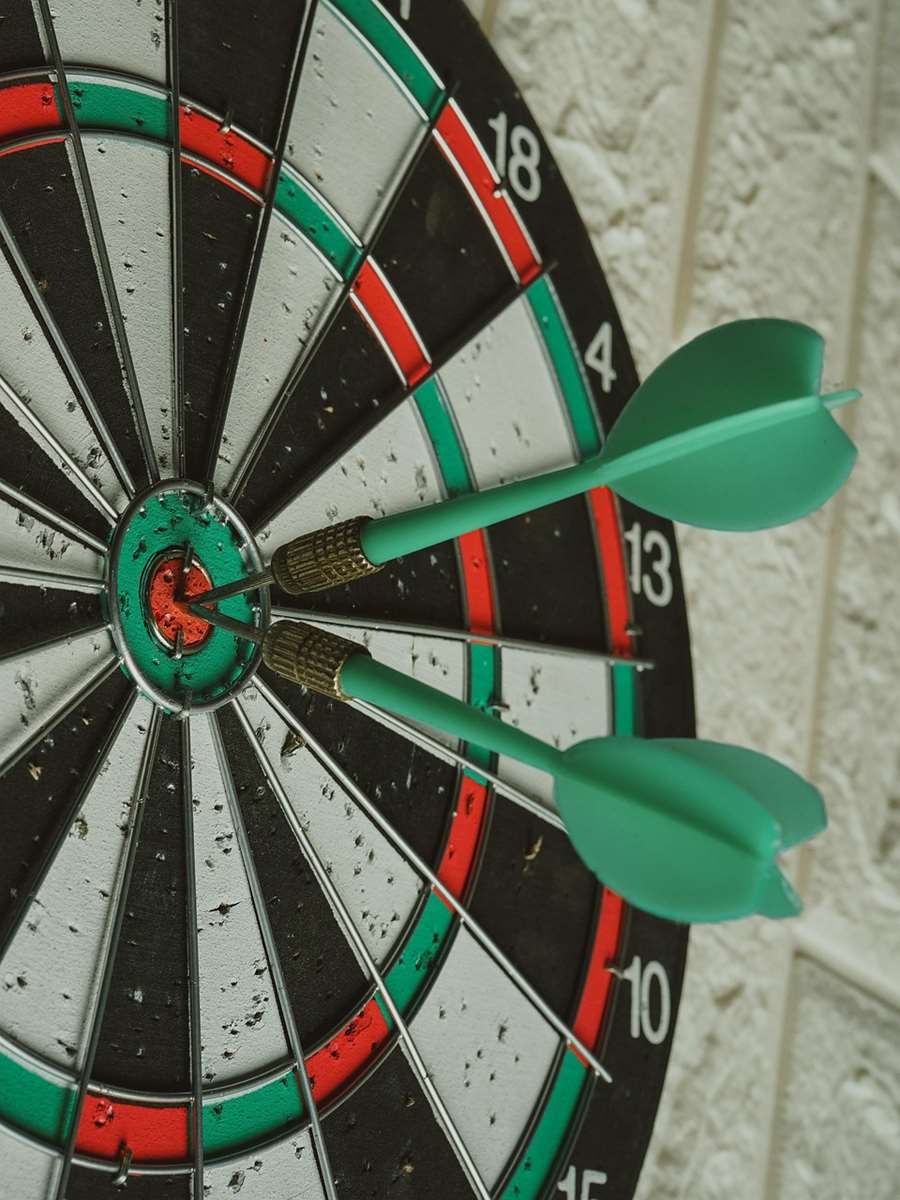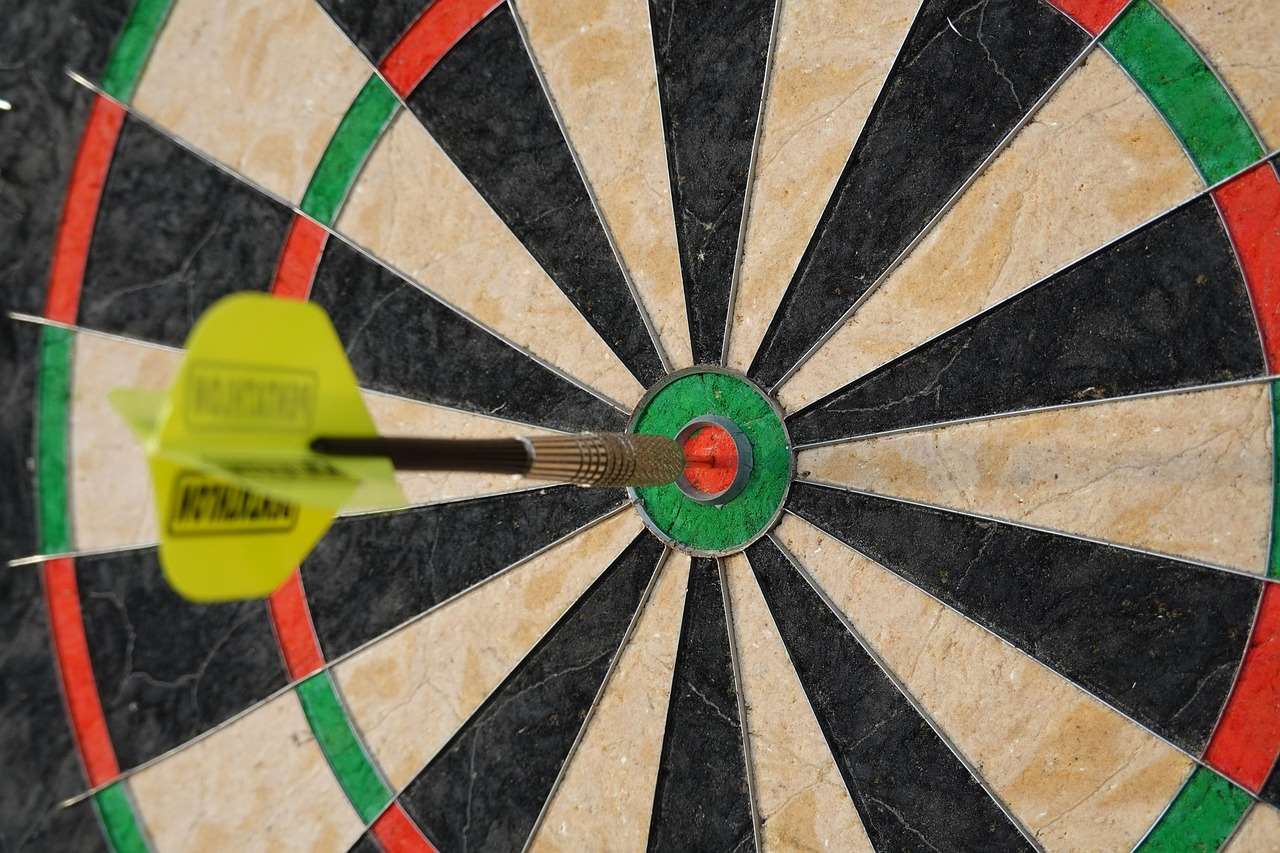Understanding the darts score explained is surprisingly simple: you start at a fixed number (usually 501 or 301) and subtract the value of each dart you throw until you reach exactly zero. This article will break down the nuances of darts scoring, covering everything from basic point values to advanced strategies and common mistakes.
⚠️ Still Using Pen & Paper (or a Chalkboard)?! ⚠️
Step into the future! The Dart Counter App handles all the scoring, suggests checkouts, and tracks your stats automatically. It's easier than you think!
Try the Smart Dart Counter App FREE!Ready for an upgrade? Click above!
Basic Darts Scoring: Hitting the Board
The standard dartboard is divided into 20 numbered sections, ranging from 1 to 20. Each section is further subdivided by wires into different scoring areas. Understanding these areas is fundamental to darts scoring.
- Single Numbers: The largest area within each section represents the single number value.
- Double Ring: The outer ring doubles the value of the corresponding section. Hitting double 20 scores 40 points.
- Treble Ring: The inner ring triples the value of the corresponding section. Hitting treble 20 scores 60 points, also known as a “ton 80” or a 180.
- Bullseye: The small inner circle (double bull) is worth 50 points.
- Outer Bull: The larger red circle around the bullseye is worth 25 points.
Missing the board entirely results in a score of zero for that dart. Accurate aiming is key!

Darts Score Explained: 501 and 301 Games
The most common darts games are 501 and 301. The rules are almost identical, the only difference being the starting score. The goal is to be the first player to reduce your score to exactly zero.
Here’s a step-by-step explanation:
- Starting Score: Each player begins with either 501 or 301 points.
- Taking Turns: Players take turns throwing three darts at the board.
- Calculating Scores: After each turn, the player adds up the values of the three darts and subtracts that total from their remaining score.
- The “Double Out” Rule: To win the game, a player *must* end their turn by hitting a double or the bullseye. This means the final dart thrown must land in the double ring of a number that reduces the score to zero, or in the double bull (50). Failing to “double out” results in a “bust,” and the player’s score reverts to what it was at the beginning of that turn. If you miss the double on your final dart you can throw the other two darts, if you wish.
- Busting: If a player’s score goes below zero, or if they reach one point (requiring an impossible double-out), it’s a bust. Their score returns to what it was at the beginning of that turn.
Example Scenario:
Let’s say a player has a score of 40 remaining. To win, they need to hit double 20. If they hit single 20, they would be left with 20 and must still hit a double 10 on their next dart to win. If the player hits a single 10 instead, they now have 10 and need a double 5 to win. If the player doesn’t hit a double on his last dart, he will bust, and his score will go back to 40.
Advanced Scoring Strategies and Checkouts
While understanding the basic rules is essential, mastering darts involves strategic aiming and checkout planning. Experienced players often have pre-planned routes to finish a game in as few darts as possible. This is referred to as “checkout strategy” or “darts finishing.” Planning your route is essential for a winning strategy.
Common Checkout Combinations:
- 170 Checkout: T20, T20, Bullseye (the highest possible checkout)
- 167 Checkout: T20, T19, Bullseye
- 164 Checkout: T20, T18, Bullseye
- 161 Checkout: T20, T17, Bullseye
- 160 Checkout: T20, T20, D20
These are just a few examples; many other checkout combinations exist. Players often memorize common checkouts to quickly calculate their best options under pressure.
Another strategic element involves leaving yourself a “two-dart checkout.” This means having a score remaining that can be finished with two darts, assuming the first dart sets up the double. For instance, leaving 32 (double 16) after the first dart of a turn is ideal.

Common Mistakes and How to Avoid Them
Even experienced dart players make mistakes. Understanding these common errors can help you improve your game and lower your darts score.
- Busting on Checkouts: As mentioned, going over zero or reaching one point is a bust. Practice your doubles and learn to calculate your scores carefully, particularly under pressure.
- Ignoring the “Double Out” Rule: Forgetting that you *must* finish on a double is a frequent mistake. Always keep this in mind as you approach the end of the game.
- Poor Aiming: Inconsistent aiming is a major obstacle. Focus on your stance, grip, and release to improve accuracy. Practice regularly!
- Neglecting Strategy: Simply aiming for the highest score on every throw isn’t always the best approach. Consider your remaining score and plan your route to a double-out.
- Mental Errors: Nerves and pressure can affect your performance. Learn to stay calm and focused, even in competitive situations.
Tips for Improving Your Darts Score
Improving your darts score takes practice, dedication, and a strategic approach. Here are a few actionable tips to help you elevate your game:
- Practice Regularly: Consistent practice is key. Even short sessions can make a difference.
- Focus on Accuracy: Work on your stance, grip, and release to improve your aim.
- Master Doubles: Doubles are crucial for finishing games. Dedicate a significant portion of your practice to hitting doubles consistently. Use an App to track your scores.
- Learn Checkout Combinations: Memorize common checkout routes to quickly calculate your options.
- Analyze Your Game: Review your performance to identify areas for improvement.
- Use a Dartboard Surround: To protect your walls from stray darts.

The Role of Technology in Darts Scoring
Technology has revolutionized many aspects of darts, including scoring. Gone are the days of manual scorekeeping, with various digital tools now available to streamline the process. There are many reasons to consider a darts scorekeeper app to track your game, your averages and your checkouts.
- Darts Scoring Apps: Several mobile apps allow you to easily track your scores, calculate averages, and even suggest optimal checkout routes. These apps often include features like player profiles, game statistics, and online multiplayer capabilities.
- Automatic Dart Counters: While less common for home use, some electronic dartboards have built-in sensors that automatically detect where the darts land and calculate the score.
These tools can greatly enhance the playing experience and provide valuable insights into your performance. They are also great tools for those learning darts game rules 301
Understanding Different Darts Variations and Scoring Adjustments
While 501 and 301 are the most popular darts games, many variations exist, each with its own unique rules and scoring adjustments.
- Cricket: A popular variation where players aim to “close out” numbers by hitting them three times (single, double, or treble). Strategic choices about which numbers to target are critical.
- Around the Clock (Killer): Players must hit each number on the board in sequence, from 1 to 20. This game tests accuracy and consistency.
- Shanghai: The goal is to score the highest possible number of points in seven rounds, aiming for a single, double, and treble of the same number in each round.
When playing different variations, understanding the specific scoring rules is essential for success. Each game presents unique challenges and requires different strategies.

The Mental Game of Darts: Staying Focused and Composed
Darts is not just a physical game; it also requires mental fortitude. Staying focused, managing pressure, and maintaining a positive attitude are crucial for consistent performance.
Here are some tips for improving your mental game:
- Visualization: Before each throw, visualize the dart hitting your target.
- Positive Self-Talk: Replace negative thoughts with positive affirmations.
- Deep Breathing: Use deep breathing techniques to calm your nerves.
- Focus on the Process: Concentrate on your stance, grip, and release, rather than the outcome.
- Learn from Mistakes: Don’t dwell on bad throws. Analyze what went wrong and learn from it.
Mastering the mental game can significantly improve your consistency and ability to perform under pressure. Don’t neglect this important aspect of darts.
If you’re looking to upgrade your setup, consider browsing a dartboard set with stand.
The Future of Darts Scoring and Technology Advancements
The world of darts is constantly evolving, with new technologies and innovations emerging regularly. In the future, we can expect to see even more advanced scoring systems and training tools.
- AI-Powered Analysis: Artificial intelligence could be used to analyze dart throws in real-time, providing personalized feedback and suggesting adjustments to technique.
- Virtual Reality Training: VR simulations could offer realistic practice environments and allow players to hone their skills in various game scenarios.
- Smart Dartboards: Dartboards with integrated sensors and data analytics could provide detailed performance metrics and track progress over time.
These advancements promise to make darts even more accessible, engaging, and competitive.

Conclusion: Mastering the Darts Score Explained
Hopefully, this comprehensive guide has helped to fully explain the ins and outs of darts scoring. From understanding the basic point values to mastering advanced checkout strategies, a solid grasp of scoring is essential for success. Remember to practice regularly, focus on accuracy, and develop a strategic mindset. Whether you’re a casual player or a serious competitor, improving your darts score is a rewarding journey. Now that the darts score explained, head over to your dartboard, apply what you’ve learned, and watch your game improve!
Hi, I’m Dieter, and I created Dartcounter (Dartcounterapp.com). My motivation wasn’t being a darts expert – quite the opposite! When I first started playing, I loved the game but found keeping accurate scores and tracking stats difficult and distracting.
I figured I couldn’t be the only one struggling with this. So, I decided to build a solution: an easy-to-use application that everyone, no matter their experience level, could use to manage scoring effortlessly.
My goal for Dartcounter was simple: let the app handle the numbers – the scoring, the averages, the stats, even checkout suggestions – so players could focus purely on their throw and enjoying the game. It began as a way to solve my own beginner’s problem, and I’m thrilled it has grown into a helpful tool for the wider darts community.